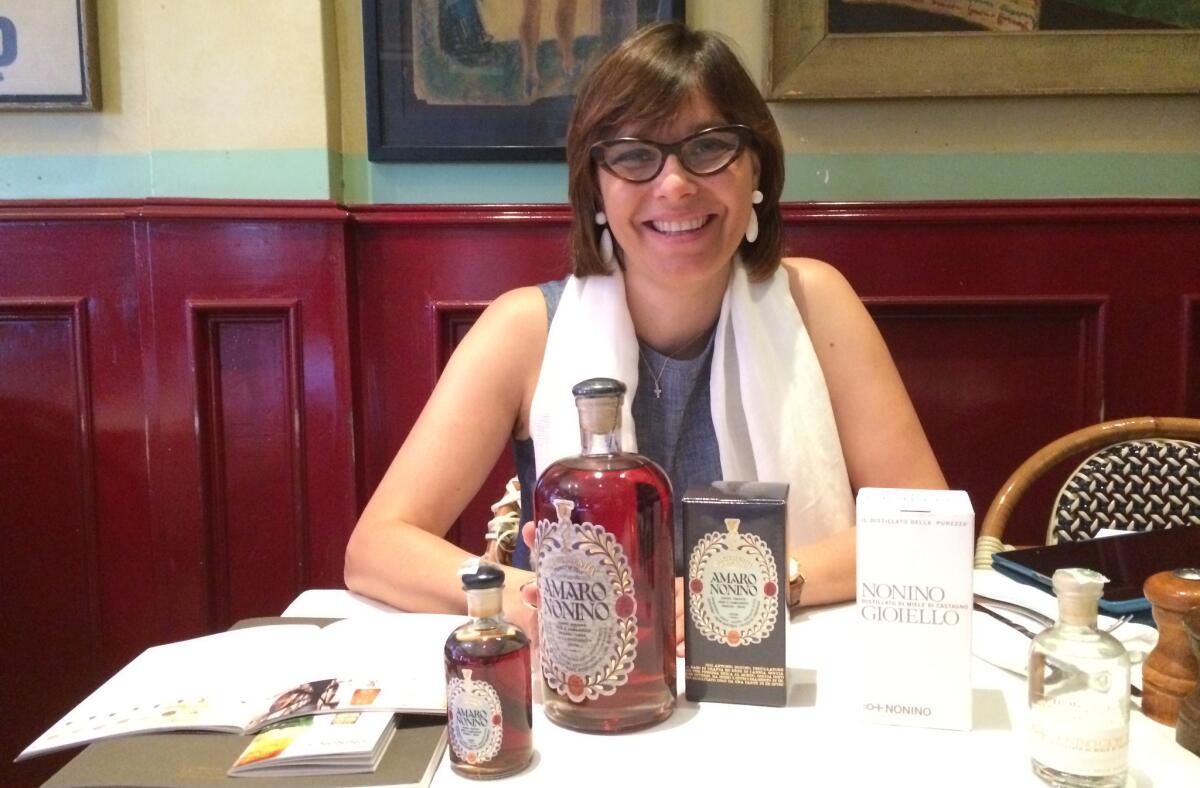Italian sisters’ Gioiello captures honey’s character in a glass

- Share via
Before the cocktail craze, before the tequila and mescal craze, there was the grappa craze. Bars and primarily Italian restaurants routinely stocked dozens of high-priced bottles. Some bore the label of prominent winemakers. Some came in eccentric glass bottles that mimicked perfume bottles. Some cost more than $30 — a glass. Not bad for a spirit once dismissed as farmer’s moonshine.
A small distillery in Friuli, Italy, is largely responsible for the turnaround. Take one master distiller (Benito Nonino), add a marketing visionary (Giannola Nonino) and you have the phenomenon that was and still is Nonino.
And now the company has a new product it hopes will do just as well -- a distillate of pure honey.
Grappa is distilled not from wine, but from vinaccia (the skins and seeds of the grapes left over from winemaking) and Benito had the genius idea to distill single varietal grappa.
Their first was Picolit, the region’s beloved indigenous grape, in 1973. Giannola decided to market the Picolit grappa as if it was Cognac or any other high-end spirit. The chic packaging certainly helped. Suddenly grappa was the trendy new spirit.
Elisabetta Nonino, one of the couple’s three daughters, was in Los Angeles recently to show off their newest product, Gioiello, distilled from pure honey. For the U.S., it’s chestnut honey, but in Italy, Gioiello is also made from acacia, citrus tree, strawberry tree, sunflower, dandelion and wildflower honeys.
Gioiello is really the daughters’ project. They had to bring something of their own to the family company, which was founded in 1897. They also vowed that they would work for their parents only if all three joined.
“Our parents are so strong,” says Elisabetta, laughing, “To work with such parents, one would not be enough. All three of us needed to do it.”
Gioiella took more than four years to develop. That’s because the makers first had to understand how honey ferments. They weren’t even sure it would be possible, but somehow they’ve managed to transfer honey’s character to the glass. It’s important to serve it very chilled, in a small glass, and to savor it in tiny sips. Gioiella is very precious stuff — and expensive at $60 for a small 375-milliliter bottle.
The company also makes Amaro Nonino ($44 to $50 for a regular-sized bottle) based on Elisabetta’s grandparents’ recipe. Theirs includes aged grappa and until the law was changed in 1986, they couldn’t produce the amaro commercially. Once that happened, the sisters went ahead and introduced Amaro Nonino in 1992. Based on grappa aged in casks of French oak and ex-sherry barrels, the amaro is infused with herbs from the mountains. It’s a terrific mixer, which is why you’ll find a bottle of Amaro Nonino in most any bar serious about cocktails.
I asked Elisabetta how she liked to drink it. “In a frozen mojito! It’s so fresh, especially for summertime and maintains the characteristic of the taste,” she said.
Follow @sirenevirbila for more on food and wine.
More to Read
Eat your way across L.A.
Get our weekly Tasting Notes newsletter for reviews, news and more.
You may occasionally receive promotional content from the Los Angeles Times.










